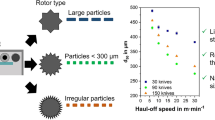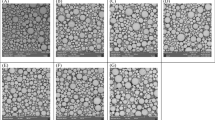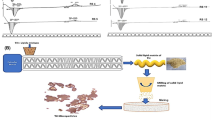Abstract
Biopharmaceuticals are usually administered intravenously with frequent dosing regimens which may decrease patient compliance. Controlled-release formulations allow to reduce the frequency of injections while providing a constant dosing of the biopharmaceutical over extended periods. These formulations are typically produced by emulsions, requiring high amounts of organic solvents and have limited productivity. Hot-melt extrusion (HME) is an alternative technology to produce controlled drug delivery systems. It is a continuous solvent-free process, leading to a small ecological footprint and higher productivity. However, it may induce thermolabile compounds’ degradation. In this work, the impact of the formulation and extrusion temperature on lysozyme’s bioactivity and release profile of poly(lactic-co-glycolic acid) (PLGA)-based extended release formulations were evaluated using a design-of-experiments (DoE) approach. The lysozyme-loaded PLGA microparticles were produced by HME followed by milling. It was observed that the in vitro release (IVR) profile was mainly affected by the drug load; higher drug load led to higher burst and total lysozyme release after 14 days. HME temperature seemed to decrease lysozyme’s activity although this correlation was not statistically significant (p value = 0.0490). Adding polyethylene glycol 400 (PEG 400) as a plasticizer to the formulation had no significant impact on the lysozyme release profile. The burst release was effectively mitigated with the inclusion of a washing step. Washing the microparticles with water reduced the burst release by 80% whereas washing them with a poly(vinyl alcohol) (PVA) aqueous solution eliminated it. In conclusion, HME is demonstrated to be suitable in producing controlled-release microparticles of small biopharmaceuticals.

Graphical abstract













Similar content being viewed by others
References
Maltesen MJ, van de Weert M. Drying methods for protein pharmaceuticals. Drug Discov Today Technol. 2008;5:81–8. https://doi.org/10.1016/j.ddtec.2008.11.001.
Carter PJ. Introduction to current and future protein therapeutics: a protein engineering perspective. Exp Cell Res. 2011;317:1261–9. https://doi.org/10.1016/j.yexcr.2011.02.013.
Leader B, Baca QJ, Golan DE. Protein therapeutics: a summary and pharmacological classification. Nat Rev Drug Discov. 2008;7:21–39. https://doi.org/10.1038/nrd2399.
Biopharmaceuticals Market - Growth, Trends, and Forecast (2019-2024). Mordor Intelligence. 2019. https://www.mordorintelligence.com/industry-reports/global-biopharmaceuticals-market-industry. Accessed 2020 Apr 8.
Muheem A, Shakeel F, Jahangir MA, Anwar M, Mallick N, Jain GK, et al. A review on the strategies for oral delivery of proteins and peptides and their clinical perspectives. Saudi Pharm J. 2016;24:413–28. https://doi.org/10.1016/j.jsps.2014.06.004.
Škalko-Basnet N. Biologics: the role of delivery systems in improved therapy. Biol Targets Ther. 2014;8:107–14. https://doi.org/10.2147/BTT.S38387.
Ma G. Microencapsulation of protein drugs for drug delivery: strategy, preparation, and applications. J Control Release. 2014;193:324–40. https://doi.org/10.1016/j.jconrel.2014.09.003.
Zheng C, Liang W. A one-step modified method to reduce the burst initial release from PLGA microspheres. Drug Deliv. 2010;17:77–82. https://doi.org/10.3109/10717540903509001.
Huynh CT, Lee DS. Controlled release. In: Encyclopedia of polymeric nanomaterials. Berlin: Springer; 2014. p. 1–12. https://doi.org/10.1007/978-3-642-29648-2_314.
Mishra M. In: Mishra M, editor. Handbook of encapsulation and controlled release. Boca Raton: CRC Press; 2015. p. 1516. https://doi.org/10.1201/b19038.
Tran PHL, Tran TTD, Park JB, Lee BJ. Controlled release systems containing solid dispersions: strategies and mechanisms. Pharm Res. 2011;28:2353–78. https://doi.org/10.1007/s11095-011-0449-y.
Huang X, Brazel CS. On the importance and mechanisms of burst release in matrix-controlled drug delivery systems. J Control Release. 2001;73:121–36. https://doi.org/10.1016/S0168-3659(01)00248-6.
Rodrigues de Azevedo C, von Stosch M, Costa MS, Ramos AM, Cardoso MM, Danhier F, et al. Modeling of the burst release from PLGA micro- and nanoparticles as function of physicochemical parameters and formulation characteristics. Int J Pharm. 2017;532:229–40. https://doi.org/10.1016/j.ijpharm.2017.08.118.
Lee AP, Lee LJ. In: Ferrari M, Lee AP, Lee LJ, editors. BioMEMS and biomedical nanotechnology, vol. I. Boston: Springer US; 2006. https://doi.org/10.1007/b136237.
Manjanna KM, Kumar P. Microencapsulation: an acclaimed novel drug-delivery system for NSAIDs in arthritis. Crit Rev Ther Drug Carrier Syst. 2010;27:501–32. https://doi.org/10.1615/critrevtherdrugcarriersyst.v27.i6.20.
Sandeep N, John DL. Parenteral medications. 4th ed. Boca Raton: CRC Press; 2019. https://doi.org/10.1201/9780429201400.
Sinha M. Use of biodegradable micro and nano-particles in vaccine delivery. Int J Biomed Res. 2011;2:102–9.
Ghalanbor Z, Körber M, Bodmeier R. Improved lysozyme stability and release properties of poly(lactide-co-glycolide) implants prepared by hot-melt extrusion. Pharm Res. 2009;27:371–9. https://doi.org/10.1007/s11095-009-0033-x.
Makadia H, Siegel S. Poly lactic-co-glycolic acid (PLGA) as biodegradable controlled drug delivery carrier. Polymers (Basel). 2011;3:1–19. https://doi.org/10.3390/polym3031377.Poly.
Naves L, Dhand C, Almeida L, Rajamani L, Ramakrishna S, Soares G. Poly(lactic-co-glycolic) acid drug delivery systems through transdermal pathway: an overview. Prog Biomater. 2017;6:1–11. https://doi.org/10.1007/s40204-017-0063-0.
Cossé A, König C, Lamprecht A, Wagner KG. Hot melt extrusion for sustained protein release: matrix erosion and in vitro release of PLGA-based implants. AAPS PharmSciTech. 2017;18:15–26. https://doi.org/10.1208/s12249-016-0548-5.
Repka MA, Majumdar S, Kumar Battu S, Srirangam R, Upadhye SB. Applications of hot-melt extrusion for drug delivery. Expert Opin Drug Deliv. 2008;5:1357–76. https://doi.org/10.1517/17425240802583421.
Teodosic J. Development of biodegradable implants. PhD thesis, Free University of Berlin, Germany; 2015.
Douroumis D. In: Douroumis D, editor. Hot-melt extrusion: pharmaceutical applications. Chichester: John Wiley & Sons, Ltd; 2012. https://doi.org/10.1002/9780470711415.
Crowley MM, Zhang F, Repka MA, Thumma S, Upadhye SB, Kumar Battu S, et al. Pharmaceutical applications of hot-melt extrusion: part I. Drug Dev Ind Pharm. 2008;33:909–26. https://doi.org/10.1080/03639040701498759.
Thiry J, Krier F, Evrard B. A review of pharmaceutical extrusion: critical process parameters and scaling-up. Int J Pharm. 2015;479:227–40. https://doi.org/10.1016/j.ijpharm.2014.12.036.
Patel A, Sahu D, Dashora A, Garg R, Agraval P, Patel PP, et al. A review of hot melt extrusion technique. Int J Innov Res Sci Eng Technol. 2013;2:2194–8.
Nafissi-Varcheh N, Luginbuehl V, Aboofazeli R, Merkle HP. Preparing poly (lactic-co-glycolic acid) (PLGA) microspheres containing lysozyme-zinc precipitate using a modified double emulsion method. Iran J Pharm Res. 2011;10:203–9.
Karl M, Djuric D, Kolter K. Pharmaceutical excipients for hot-melt extrusion. Pharm Technol Ed. 2011;35:74–82.
Gao N, Guo M, Fu Q, He Z. Application of hot melt extrusion to enhance the dissolution and oral bioavailability of oleanolic acid. Asian J Pharm Sci. 2017;12:66–72. https://doi.org/10.1016/j.ajps.2016.06.006.
Patil H, Tiwari RV, Repka MA. Hot-melt extrusion: from theory to application in pharmaceutical formulation. AAPS PharmSciTech. 2016;17:20–42. https://doi.org/10.1208/s12249-015-0360-7.
Stanković M, Frijlink HW, Hinrichs WLJ. Polymeric formulations for drug release prepared by hot melt extrusion: application and characterization. Drug Discov Today. 2015;20:812–23. https://doi.org/10.1016/j.drudis.2015.01.012.
Desai D, Sandhu H, Shah N, Malick W, Zia H, Phuapradit W, et al. Selection of solid-state plasticizers as processing aids for hot-melt extrusion. J Pharm Sci. 2018;107:372–9. https://doi.org/10.1016/j.xphs.2017.09.004.
Wang W. Instability, stabilization, and formulation of liquid protein pharmaceuticals. Int J Pharm. 1999;185:129–88. https://doi.org/10.1016/S0378-5173(99)00152-0.
Jiang W, Schwendeman SP. Stabilization and controlled release of bovine serum albumin encapsulated in poly(d,l-lactide) and poly(ethylene glycol) microsphere blends. Pharm Res. 2001;18:878–85.
Kita Y, Arakawa T, Lin TY, Timasheff SN. Contribution of the surface free energy perturbation to protein-solvent interactions. Biochemistry. 1994;33:15178–89. https://doi.org/10.1021/bi00254a029.
Shen J, Lee K, Choi S, Qu W, Wang Y, Burgess DJ. A reproducible accelerated in vitro release testing method for PLGA microspheres. Int J Pharm. 2016;498:274–82. https://doi.org/10.1016/j.ijpharm.2015.12.031.
Instruction Manual MiniLab II HAAKE Rheomex CTW5. Thermo Scientific; 2007.
Andhariya JV, Choi S, Wang Y, Zou Y, Burgess DJ, Shen J. Accelerated in vitro release testing method for naltrexone loaded PLGA microspheres. Int J Pharm. 2017;520:79–85. https://doi.org/10.1016/j.ijpharm.2017.01.050.
Verhoeven J, Schaeffer R, Bouwstra JA, Junginger HE. The physico-chemical characterization of poly (2-hydroxyethyl methacrylate-co-methacrylic acid: 2. Effect of water, PEG 400 and PEG 6000 on the glass transition temperature. Polymer (Guildf). 1989;30:1946–50.
Evonik. Technical Information RESOMER® Polymers. 2017.
Ebnesajjad S. Introduction to plastics. In: Chemical resistence of commodity thermoplastics. Amsterdam: Elsevier; 2011. p. xiii–xxv.
Carpenter J, Katayama D, Liu L, Chonkaew W, Menard K. Measurement of Tg in lyophilized protein and protein excipient mixtures by dynamic mechanical analysis. J Therm Anal Calorim. 2009;95:881–4. https://doi.org/10.1007/s10973-007-8986-7.
Sivandzade F. An analytical model for prediction of controlled release from bulk biodegrading polymer microspheres. Asian J Pharm Clin Res. 2018;11:432–7. https://doi.org/10.22159/ajpcr.2018.v11i3.23219.
Funding
The authors would like to thank Hovione for supporting this work.
Author information
Authors and Affiliations
Corresponding author
Additional information
Publisher’s Note
Springer Nature remains neutral with regard to jurisdictional claims in published maps and institutional affiliations.
Rights and permissions
About this article
Cite this article
Farinha, S., Moura, C., Afonso, M.D. et al. Production of Lysozyme-PLGA-Loaded Microparticles for Controlled Release Using Hot-Melt Extrusion. AAPS PharmSciTech 21, 274 (2020). https://doi.org/10.1208/s12249-020-01816-8
Received:
Accepted:
Published:
DOI: https://doi.org/10.1208/s12249-020-01816-8




